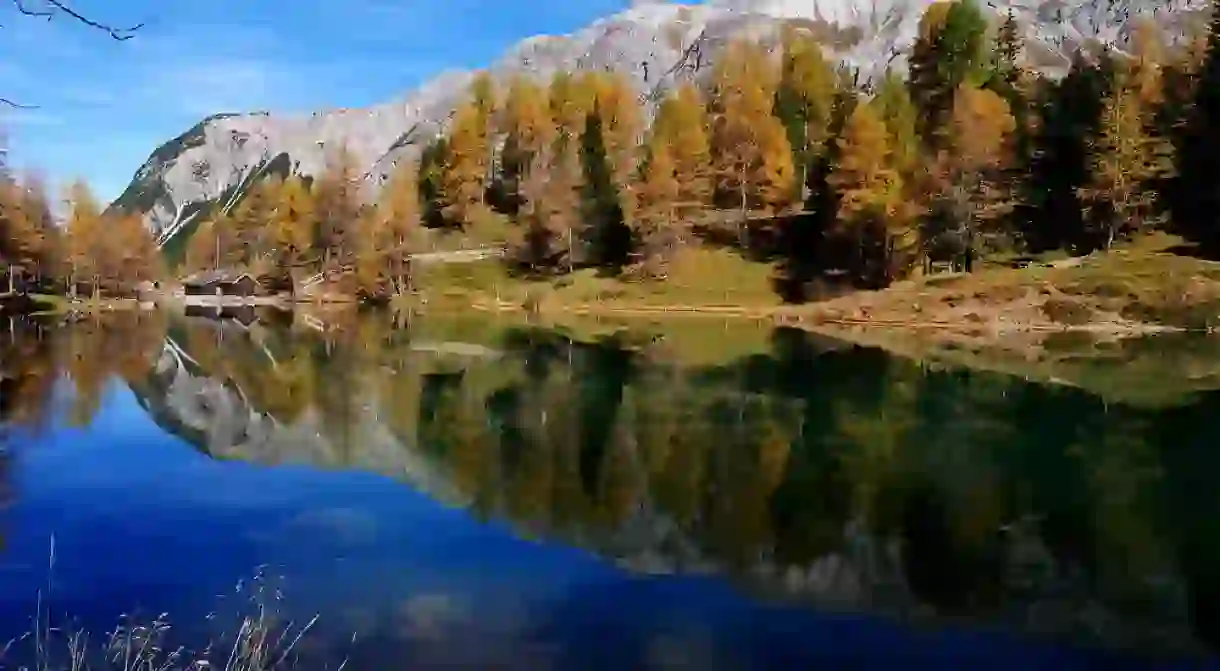How Switzerland Has Inspired Some of the World's Most Famous Writers

Switzerland has fascinated and befuddled writers for decades. Not always has this resulted in the most complimentary words being scribbled. Centuries ago, Roman Emperor Julian decried the infernal “wild, shrieking songs” that the early Swiss made in the mountains. He was not a fan of yodeling it seems. Since then, however, many writers have found themselves enthralled by the country’s natural beauty.
Mark Twain
“[T]here are only two best ways to travel through Switzerland. The first best is afoot. The second best is by open two-horse carriage.” That’s how Mark Twain described his ideal Swiss traveling method in an article published in the Chicago Daily Tribune in 1892. A frequent traveler, and not one to shy away from a little hyperbole, Twain lamented that the construction of “ladder railways” had destroyed the beauty of the majestic mountains since he had seen them last. “[T]he peasant of the high altitudes will have to carry a lantern when he goes visiting in the night to keep from stumbling over railroads that have been built since his last round,” Twain wrote scathingly. During his travels through Switzerland, in between mocking much of what he saw, Twain fell for the small town of Weggis, near Lucerne. “I believe that this place [Weggis] is the loveliest in the world, and the most satisfactory. The scenery is beyond comparison beautiful… Sunday in heaven is noisy compared to this quietness.” He would go on to write about his Swiss experience, as well as his travels in Germany and Italy, in A Tramp Abroad.

Ernest Hemingway
“Switzerland is a small, steep country, much more up and down than sideways, and is all stuck over with large brown hotels built on the cuckoo clock style of architecture,” is how Hemingway playfully describes his encounter with Switzerland. While visiting on a ski trip, he was also not shy about mocking the Swiss habits of sledging, comparing the Swiss equipment to “little girls’ sleds in Canada.” Hemingway penned A Homage to Switzerland and set the finale of his classic A Farewell to Arms near Lake Maggiore in Switzerland.
J.R.R. Tolkien
Tolkien’s epic world of Middle Earth has its origins in Switzerland. As a young lad of 19, Tolkien toured the country, taking in sights such as the Aletsch Glacier and the peaks of the Alps. He would later draw on his experience in the Alps, including a terrifying thunderstorm, when writing The Hobbit. Some believe that the Lauterbrunnen valley was the inspiration for Tolkien’s imaginary Rivendell, home of the elves. Today, it is possible to visit a Tolkien-themed museum in the city of Chur, in eastern Switzerland.

Mary Shelley
In 1816, Shelley spent a “year without a summer” with her lover and friends, including Byron, on the shore of Lake Geneva, where they shared ghost stories and thought up new ideas. At the time, Erasmus Darwin was experimenting with electricity, making the muscles of dead bodies contract and spasm. The mad-cap experiments were the talk of the summer. Afterwards, inspired by a horrifying waking dream, Shelley would write Frankenstein and partly set the story in and around Geneva.
Lord Byron
In The Prisoner of Chillon, the controversial Lord Byron immortalized the tragic tale of François Bonivard, a monk who had been imprisoned in Chillon Castle from 1532 to 1536. Byron had been visiting Switzerland with a group of writer friends and together they toured the castle. The story of the monk, and a visit to the dungeons where the unfortunate man was kept, struck a chord with Byron and later that year his work was published. The story has played a part in making Chillon the most popular historical site in Switzerland.

Arthur Conan Doyle
The famous Brit who gave the world Sherlock Holmes found something he had been looking for in Switzerland: a way to kill off his most popular creation. The public may have loved Holmes’ adventures, but Conan Doyle was less of a fan and saw them as a heavy weight, distracting his pen and his mind. He once wrote that the detective “has tended to obscure my higher work.” So, when he visited the Reichenbach Falls, Conan Doyle imagined a fatal battle between Holmes and his archenemy, Professor Moriarty, that would become legendary. Later, under pressure from publishers and the public, Conan Doyle revived Holmes, likely to his great chagrin.
Vladimir Ilyich Ulyanov
The mastermind of the Russian Revolution, whose actions and work shaped much of the 20th century, spent several years in Switzerland. In his efforts to spread his radical ideas and ferment a revolution, Lenin was thwarted by “Swiss social pacifists,” as he disparagingly dubbed them. Despite this, he seemed to have been fond of Zurich, Switzerland’s banking capital, and was full of compliments about its scenery. It was here, in 1916, where he put the final touches on Imperialism, the Highest Stage of Capitalism.













